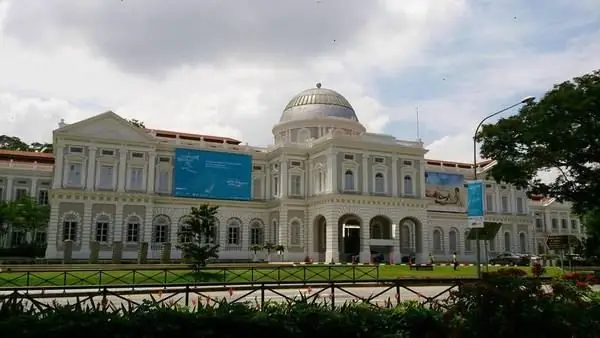
Description of the attraction
The National Museum of Singapore is the most valuable and extensive collection of exhibits on the history of the island. It is considered the oldest museum in the country, and one of the four that have national status.
Built in 1849 as one of the subdivisions of the institute library. In 1887, on the occasion of the half-century anniversary of the reign of the British Queen Victoria, the museum received a new building, in which it is located to this day. The Stanford Road building was designed in the neo-Palladian style favored by Singapore's British architects. In 2003 - 2006 the building was expanded and reconstructed. The modern structure of metal and glass was intelligently built into the old elegant building of the museum. This clever renovation, while preserving its original style, has turned the museum building into an architectural icon of Singapore.
And yet, its main advantage is the exposition telling about the history of Singapore from the XIV century, including through modern interactive opportunities. Four "Galleries of Life" display costumes and household items, photographs and newsreels that recreate a picture of the life of the island over the decades.
Among the most important artifacts of the museum is a Singapore stone dating from the 10th-11th centuries, with an undeciphered inscription, presumably in Sanskrit or Old Javanese. An exotic exhibit of the collection of artifacts is the golden ornaments of the Sacred Hill of the island of Java. And the most interesting is the testament of the Malay educator and writer of the 19th century Abdullah ibn Abdul-Qadir, the author of famous historical and philosophical works. The collection of significant artifacts includes an early photograph (daguerreotype) of Singapore, watercolors of the first English colonist of the island, portraits of British colonial leaders who influenced the development of Singapore, etc.
Among the new sections of the museum are the viewing halls of national cuisine and cinema. The museum organizes master classes on the arts of the peoples of Singapore, for example, painting on porcelain.






